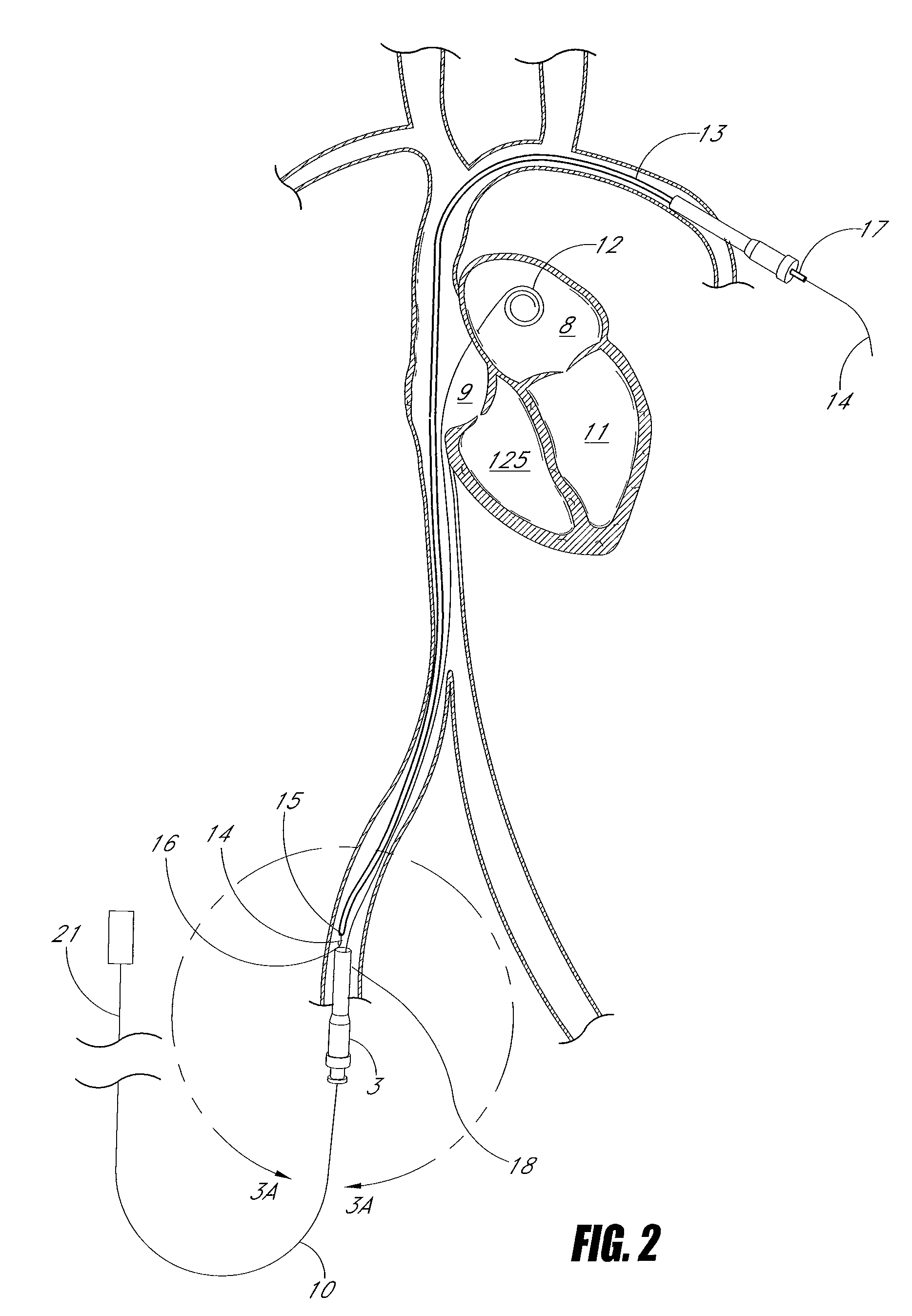Apparatus and methods for transferring an implanted elongate body to a remote site
- Summary
- Abstract
- Description
- Claims
- Application Information
AI Technical Summary
Benefits of technology
Problems solved by technology
Method used
Image
Examples
Embodiment Construction
[0084]Several embodiments of the present invention generally relate to a system and method for performing catheterization of a body structure from a standard catheter insertion site, advancing a guidewire or other flexible member (e.g., an electrical lead, conduit, tube, etc.) into the body structure from that insertion site, and transferring the proximal end of the guidewire to an alternative insertion site while leaving the distal end of the guidewire within the body structure. The transferred guidewire may then be used for the placement of a second device or to perform a desired procedure from the alternative insertion site. Some embodiments relate to methods for standard transseptal puncture of the left atrium from a femoral vein, where the guidewire is then transferred from the femoral insertion site to a subclavian vein insertion site for the implantation of a left atrial pressure-monitoring device. Several embodiments described herein are also generally applicable to other si...
PUM
 Login to View More
Login to View More Abstract
Description
Claims
Application Information
 Login to View More
Login to View More - R&D
- Intellectual Property
- Life Sciences
- Materials
- Tech Scout
- Unparalleled Data Quality
- Higher Quality Content
- 60% Fewer Hallucinations
Browse by: Latest US Patents, China's latest patents, Technical Efficacy Thesaurus, Application Domain, Technology Topic, Popular Technical Reports.
© 2025 PatSnap. All rights reserved.Legal|Privacy policy|Modern Slavery Act Transparency Statement|Sitemap|About US| Contact US: help@patsnap.com



